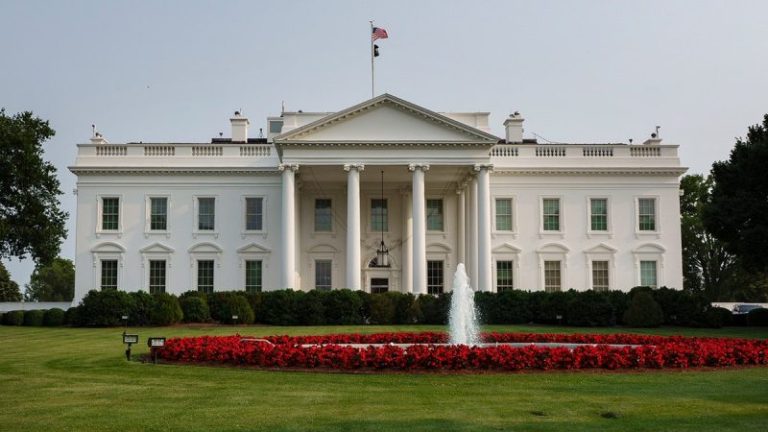The debris arrives in the rockets’ wake: melted plastics, aluminum and pieces of blue adhesive. It all ends up stranded on the sands of Bagdad beach in northern Tamaulipas, Mexico, home to an endangered species of sea turtle. Just across the border lies Starbase, SpaceX’s launchpad and company town.
Since November, Conibio Global, a small non-governmental organization, has taken on a daunting task: cleaning up trash from SpaceX, one of the most powerful companies in the world.
In May, however, there was another launch, with more debris. This time, the activist claims, millions of particles ended up contaminating the area on the Mexican side. Ibarra said that a few days later, the organization collected more than a ton of waste in an area of 500 meters.
“In half a kilometer out of the 40 kilometers of shoreline, we already collected one ton (of trash),” added Ibarra. “We are a very small group, it’s impossible to clean everything.”
Ibarra said that Conibio Global handed the debris to the Mexican government’s environmental protection agency PROFEPA.
The statement added that the company had performed tests that they claim confirm that there are no chemical, biological or toxicological risks associated with the flotsam and jetsam of a typical SpaceX launch.
Ibarra said that Conibio Global has not had any contact with the company.
“Although a lot of debris is not hazardous, spaceflight-related vehicles can contain hazardous chemicals and materials,” Sorge wrote. “Be aware that it is not worth the risk to touch a piece of debris, and it could interfere with important investigations.”
Some of the objects found during cleanup operations, Ibarra said, are solid and spongy plastics, a type of rubber with a consistency similar to cork, aluminum with SpaceX labels, pieces of plastic bubble wrap, steel tubes, and pieces of a blue-colored adhesive.
Some of this trash, Ibarra predicted, could end up being ingested by Kemp’s ridley turtles, an endangered species of sea turtle that inhabits the area.
On its website, SpaceX says it is committed to minimizing the impact and improving the environment whenever possible, highlighting agreements with various US agencies and the Texas government.
After the recent explosion of a SpaceX rocket on June 19, the NGO reported that some large fragments appeared in Mexican territory the next morning. It stated that several officials from the Mexican government got in touch so that they could be informed of the situation.
Conibio follows SpaceX’s social media announcements to know when there will be launches and goes to the sites to collect evidence of debris they know will fall. He says this happens in the northern area of Bagdad Beach and on a parcel of communal farming land in nearby Matamoros.
Following persistent public complaints, Mexico’s President Claudia Sheinbaum spoke out at her daily conference on June 25.
Sheinbaum said that her government had found that there is indeed pollution and that the impact of rocket launches in general will be reviewed in order to take action “within the framework of international laws,” including possible legal actions.
Ibarra, who is also a veterinarian and director of the Marine Turtle Program at Conibio Global, said that he believes the vibrations generated by the rockets compact the sand where there are turtle nests and prevent them from emerging. He said that at least 300 hatchlings have died in the compacted nests.
“There is vegetation that the last explosion burned, the entire edge of the Rio Bravo, and the pipes broke many trees, which fell near a small population of people,” said Ibarra. He added that in several border cities between Tamaulipas and Texas it was reported that there was minor damage to houses due to the vibrations from the rockets.
A team of environmental officials and personnel from the Mexican Navy Secretariat went to collect the waste Conibio collected last weekend, and during the visit, Ibarra recounted, they found a tank approximately 4 meters long and a stainless steel pipe weighing about 5 kg.
Dealing with cleaning up the waste has cost the NGO more than US$26,000 in operating expenses and beach monitoring due to vehicle fuel they use and laborers’ wages, as well as cleaning materials, the organization claims.
Ibarra noted that the Mexican government has collaborated with them since they became aware of the situation, especially since it involves a foreign company. He claimed that during one of the visits they were “harassed” by SpaceX drones that were recording them.
In SpaceX’s statement on social media, the company said that the debris is its property and that its recovery attempts have been hindered by individuals who had “trespassed” on private property without authorization.
The Government of Tamaulipas has always expressed that it wants a collaborative relationship with SpaceX. Governor Américo Villarreal visited Starbase in November 2024.
While the bigger rocket pieces have been removed, Ibarra says the trash remains a major problem at Bagdad Beach.
“The debris is still there,” Ibarra said. “It’s no longer as visible as in the photos because the tides have been burying it, but it’s there, and it has to be removed sooner or later.”
This post appeared first on cnn.com










